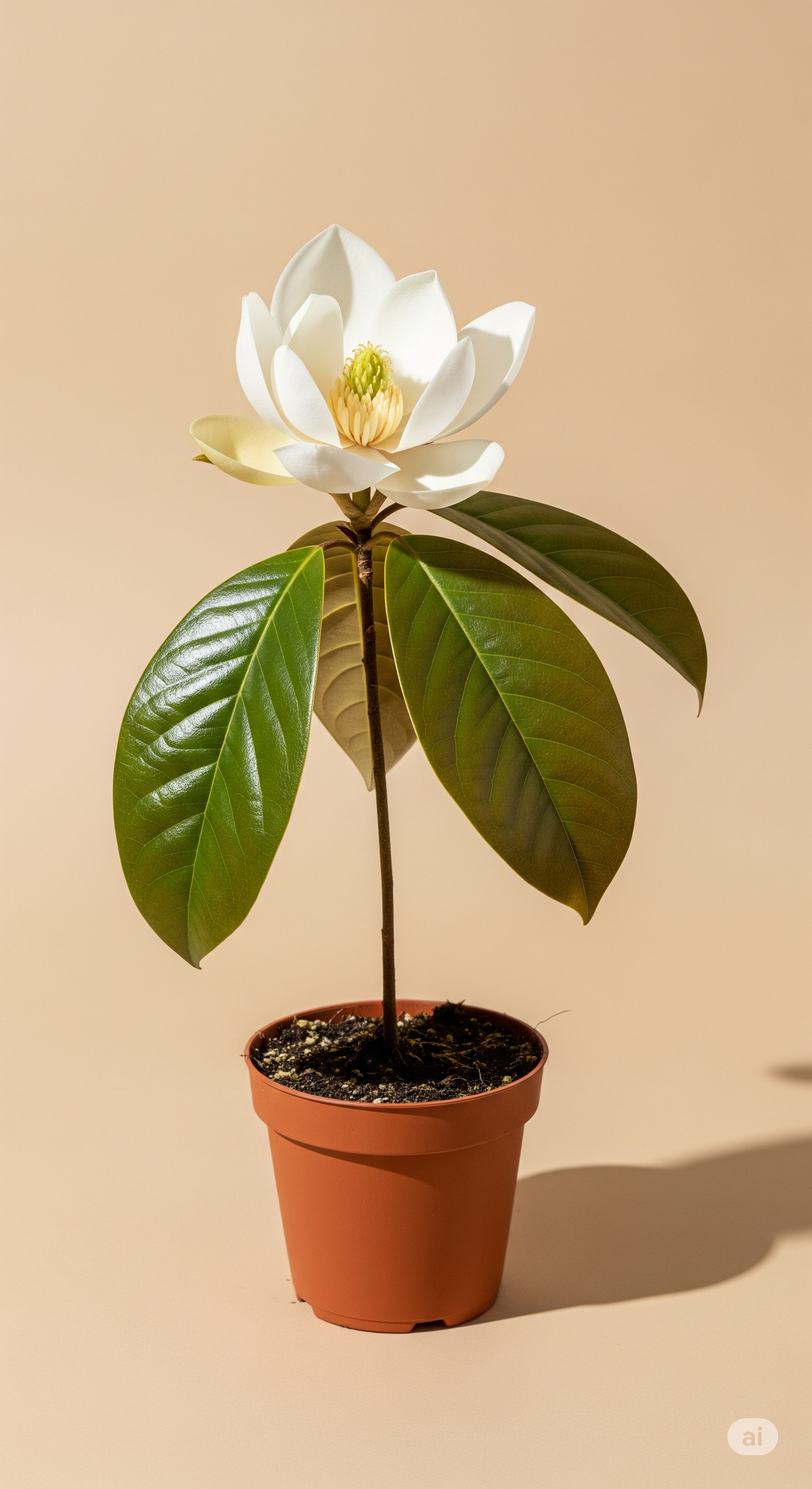Magnolia

Scientific name: Magnolia grandiflora
☘️ Toxicity: Safe for cats
☀️ Ideal light: Full sun to partial shade
💧 Watering: Moderate; prefers evenly moist, rich soil
The Southern Magnolia (Magnolia grandiflora) is a majestic evergreen tree admired for its large, glossy leaves and showy, fragrant white flowers. It’s elegant, long-lived, and safe for cats — ideal for shaded gardens or as a statement specimen tree.
Essential care
- Light: Prefers full sun but tolerates partial shade.
- Water: Keep soil moist, especially for young trees. Mature plants tolerate short dry periods.
- Soil: Deep, fertile, and well-draining soil enriched with organic matter.
- Environment: Ideal for temperate climates; protect young trees from harsh winds and intense heat.
- Fertilization: Every 2–3 months during the growing season with a slow-release organic fertilizer.
- Pruning: Minimal; only remove dead or crossing branches after flowering.
Flowering
- Season: Spring through early summer.
- Characteristics: Large white flowers (up to 25 cm wide) with an intense, lemony fragrance.
- Tip: Blooms best in well-lit, open areas with mild humidity.
Pests and how to handle them
- Scale insects: Wipe with cotton and alcohol or use neem oil spray.
- Aphids: Rinse with water and apply insecticidal soap if needed.
- Leaf spots: Improve air circulation and avoid wetting leaves at night.
Propagation
- Seeds: Sow in autumn after removing the red outer coating.
- Cuttings: Semi-hardwood cuttings root best with growth hormone and humidity control.
Cat safety
- Classification: Non-toxic to cats (ASPCA).
- Best practice: Even though it’s safe, avoid leaf chewing to preserve plant aesthetics.
💡 Magnolia leaves remain glossy year-round, providing lush foliage even when not in bloom.
Quick checklist
- ☀️ Full sun to partial shade
- 💧 Moderate watering
- 🪴 Rich, well-draining soil
- ✂️ Minimal pruning
- 🐾 Safe for cats